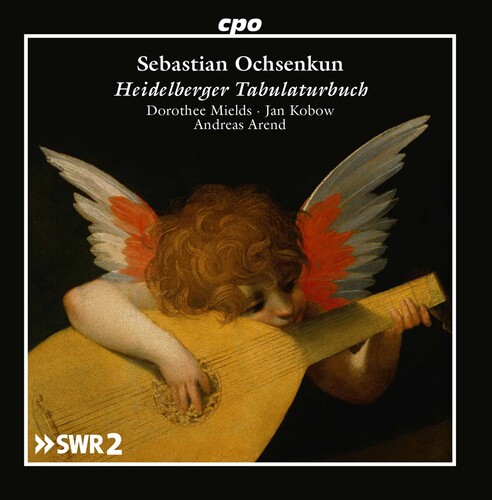Show results for
Deals
- 4K Ultra HD Sale
- Action Sale
- Alternative Rock Sale
- Anime sale
- Award Winners Sale
- Bear Family Sale
- Blu ray Sale
- Blues on Sale
- British Sale
- Classical Music Sale
- Comedy Music Sale
- Comedy Sale
- Country Sale
- Criterion Sale
- Electronic Music sale
- Fantasy Film and TV
- Folk Music Sale
- Hard Rock and Metal Sale
- Horror Sci fi Sale
- Jazz Sale
- Kids and Family Music sale
- Kids and Family Sale
- Metal Sale
- Music Video Sale
- Musicals on Sale
- Mystery Sale
- Naxos Label Sale
- Olive Films on Sale
- Page to Screen Sale
- Paramount Sale
- Pop and Power Pop
- Rap and Hip Hop Sale
- Reggae Sale
- Rock and Pop Sale
- Rock Legends
- Soul Music Sale
- TV Sale
- TV Sale
- Vinyl on Sale
- War Films and Westerns on Sale

Das Heidelberger Lautenbuch
- Format: CD
- Release Date: 1/7/2022

Product Notes
Sebastian Ochsenkun's Tabulaturbuch auf die Lauten consisting of Latin motets (premiere recordings!), German psalms and songs, and Italian and French pieces was published in 1558 as a collection of contemporary vocal music arranged for the lute. As far as the placement of the music in the collection and quantitative factors are concerned, Josquin des Préz is the most prominently represented composer. In addition, pieces by other renowned composers such as Nicolas Gombert from the Spanish court of Emperor Charles V and Ioannes Mouton from the court of King Francis I of France can be heard on this recording. Ochsenkun was the lutenist of Prince Elector Ottheinrich of the Palatinate. Rising to what was a technically challenging task, he always produced the complete texture for his instrument by transcribing all the voices into lute tablature. His intabulations stand out from those of his contemporaries, who often limited themselves to three voices and sometimes to two. Nevertheless, Ochsenkun's intabulations are excellently suited for »having a voice sing to them« - which will be demonstrated on this recording, also with several voices and in outstanding interpretations by the renowned singers Dorothee Mields and Jan Kobow. Viewed historically, Ochsenkun's work is regarded as testimony to the high level of music and lute playing during the middle years of the sixteenth century, also in Southern Germany. It shows us a musician who with his aspiration to quality and system is able to offer far-reaching impulses even beyond his times and his instrument.


